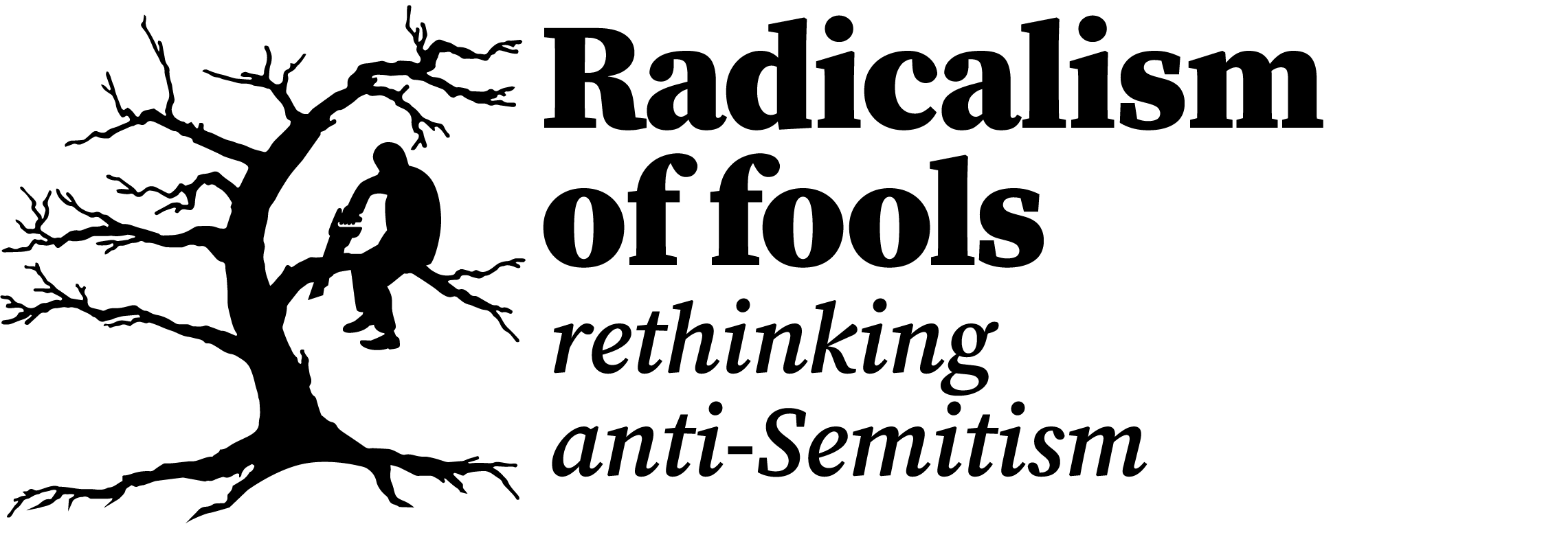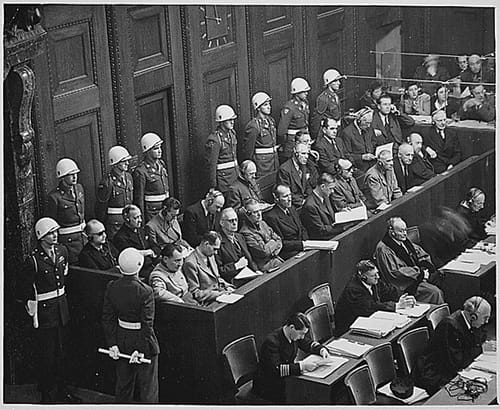The Nuremberg war crimes trials of 1945-46 set the tone for the discussion of the Nazi atrocities in the wake of the second world war. If anything, the trials’ form reinforces my hypothesis that it is a myth that the Allies promised ‘never again’ to the Jews. Although the Nazi death camps were inevitably mentioned the Allies carefully avoided framing the charges to include a specific focus on the Jewish tragedy.
Eighty years ago today the trial of 22 senior Nazi leaders, including Hermann Göring, opened in the Bavarian city. The location was chosen for its symbolic value. It was the site of the annual Nuremberg rallies held by the Nazis from 1933 to 1938 (the famous Leni Riefenstahl documentary, Triumph of the Will, on the 1934 rally is available to watch here ). It was also the place where in 1935 the Nazi regime announced its race laws. The laws, among other things, stripped Jews of all political rights as it deemed them inferior to other races.
The trials were conducted by the four Allied powers which occupied Germany after the war: America, Britain, France and the Soviet Union. It broke new ground in developing a framework of international law which could operate outside the nation state. So the Nazi leaders, who had performed their atrocities under the auspices of the defunct German regime, could be punished by a superior transnational court.
Inevitably the horrors of what was then generally called the Final Solution (the Holocaust was not used as a term back then) provided the backdrop to the trials. They would have been impossible to avoid. Documentary footage of the death camps was shown to the court.
Nevertheless, although anti-Semitism was a central component of Nazi thinking, there was no specific focus on the Jews at the trial. Jews were not allowed to play a public role in the prosecution case. In addition, only three Jews gave evidence.
More generally the charges against the Nazi defendants at Nuremberg were divided into several categories including crimes against peace and crimes against humanity. The former referred to Germany’s destruction of the existing political order in Europe. The latter referred to large-scale attacks against civilians.
In contrast to the contemporary discussion it was crimes against peace which were the priority back then. Crimes against humanity were seen as of secondary importance. For that reason America and Britain took responsibility for prosecuting the crimes against peace. Crimes against humanity were left to France and the Soviet Union.
As Kirsten Sellars, the author of ‘Crimes against peace' and international law, noted in her seminal study of the subject:
"Back in 1945, there seemed to be compelling reasons for trying the German and Japanese leaders for crimes against peace. First, the charge provided a conceptual framework for the trials: by asking 'who started the war?' the prosecuting powers could present the European and Asia-Pacific wars as one-sided and decontextualised events. Second, the crimes against peace charge allowed them to focus on those individuals they most wanted to see in court: the top-flight planners of wars rather than the lower-rank perpetrators of atrocities. With these advantages in mind, the Allies established a hierarchy of iniquity at the tribunals, with the substantive crime of crimes against peace at the top and the crimes devolving from them - war crimes and crimes against humanity - at the base." (p290-291).
It is all too easy to read history backwards by assuming that what preoccupies us in the present was the priority in the past. But the historical record shows that after the second world war the Allies as far as possible avoided focusing on the fate of the Jews. Although the subject was unavoidable it was never a specific heading in the Nuremberg trials.
Instead back then the Allies emphasised crimes against peace rather than crimes against humanity or war crimes. The victors’ preoccupation in the aftermath of the war was on how Nazi Germany had upended the existing European order. Concern about the fate of the Jews under the Final Solution was a distinctly secondary priority.
Crimes against humanity and war crimes were clearly ranked below crimes against peace at Nuremberg. The fate of the Jews was even lower down the priority list and never constituted a distinct charge at the trial.
PS: The earliest reference I have found of an American president using the term "never again" in relation to the Holocaust is Jimmy Carter in 1979. Even there there is some ambiguity about whether he is talking about the Jews or the Nazi mass killings more generally. It looks like the discussion may have been different in Germany, for understandable reasons, but that is a story for another day.
Photo: "Public Domain: Nuremberg Trials. Looking Down on Defendants (NARA)" by pingnews.com is marked with Public Domain Mark 1.0.
---------------------------------------------------
Movie representations of Nuremberg
· Nuremberg, a 2025 fictionalised version of the trial starring Russell Crowe, is out in cinemas at present. It could be described as a ‘mental health view’ as it is told from the perspective of a US army psychiatrist working with the defendants.
· Judgement at Nuremberg, a 1961 fictionalised version, is available on BBC iPlayer and on YouTube. Told from the perspective of the chief judge.

